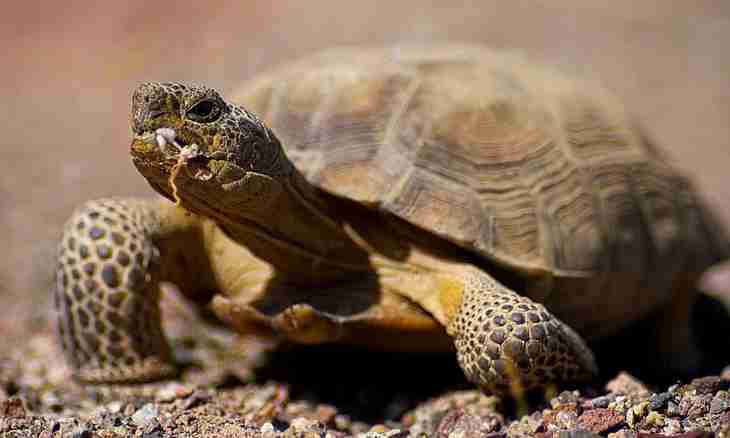Because of extreme conditions of survival the desert is one of the most adverse habitats of animals and plants. Daytime temperature can reach 60 OS here, sand can be heated up to 90 wasps! The acute shortage of water and a hot heat incinerating everything on the way plainly do not allow to develop to a vegetable cover. In such conditions some animals also should exist all the life. But, despite this, the fauna of the desert is very various and is even fancy.
Instruction
1. For many years of existence in similar conditions the animals inhabiting deserts managed to adapt to so severe climate. From a day heat and night frosts they hide in underground holes, eating backs of plants. Evolution does not stand still, and at many inhabitants of deserts the system of thermal control developed. For example, some bird species are able to regulate temperature of the body by means of an open beak, and small chanterelles-feneki and desert hares are cooled at the expense of the huge ears. The lion's share of all desert inhabitants are able to move pretty fast on the heated sandy surface. For example, on pads the desert lizards have special combs from the grown scales creating a rigid support. And some of them can even maintain loss of liquid to a third of the weight (for example, camels or geckoes).
2. Among various inhabitants of desert areas there are also carnivorous: jackals, foxes, snakes, coyotes. Nevertheless the majority of local animals are herbivorous beings. For example, food for antelopes and camels are prickles, dry branches of bushes, and as food for small rodents serve seeds of the available plants. Deserts are inhabited not only by vertebrate animals, but also insects. They, of course, are hardly noticeable there, however their world is very different. At night bugs, ants, mosquitoes, mosquitoes become more active. Besides, some representatives of arachnoid animals – poisonous tarantulas and scorpions whose stings quite often lead to death also live in severe conditions. Anyway, and the most known and the most adapted for such severe life animal is, of course, the camel.
3. Camels are presented by two types – single-humped and two-humped. Single-humped camels inhabit the deserts of Africa, and two-humped – the deserts of Asia. These animals differ in surprising ability long time to do without water. The certain physiological features characteristic of camels allow them to exist in severe desert conditions better than other animals. For example, the thick layer of dense wool protects a body of an animal from overheating, and its organism is capable to regulate temperature independently. Thanks to such wool the camels transfer temperatures from - 29 wasps to +38os, and thanks to the metabolism they have unique chance to live without uniform drink of water more than 2 weeks.
4. The special structure of a camel body also allows an animal to feel comfortably in hot deserts. The distinctive feature of legs allows them not to feel the heated sand, existence of dense eyelashes and eyebrows and also special okolonozdrevy muscles protects a camel from sandstorms. Moreover, camels are not whimsical in food. They eat almost everything: both prickly herbs, and old dry leaves, and the other forage inedible for other animals.

